
Daisy Spoke has started some new adventures!
Welcome to Episode 1 of The Great Backpacking Adventure in which I turn to overnight hiking to learn more life lessons through an outdoor adventure lifestyle.
My best memories and my best learning about life have come from spending weekends and holidays in the great outdoors. As a child my parents whisked us away for family holidays in our caravan or tent, taking in wonderful adventures as we immersed ourselves in some of Australia’s most iconic landscapes. We took walks in the grandeur of rainforested mountains enthralled by stories of our ancestors’ pioneering days. On secret secluded beaches we discovered ocean life washed upon the shore – evidence of another world we could barely begin to imagine. Across the deserts we drove, soaking in the wonder of the sunrises and sunsets, a land of extremes in myriad ways.
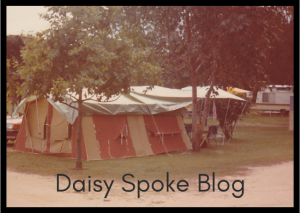
My teenage years brought the opportunity to go camping with my Girl Guide and Ranger crews. As a restless sleeper, I knew then that my best sleeps came after a day in the outdoors, hiking, learning woodcraft skills, cooking over a campfire, canoeing, kayaking, abseiling, riding bikes and simply being with others who loved the adventure as much as I did.
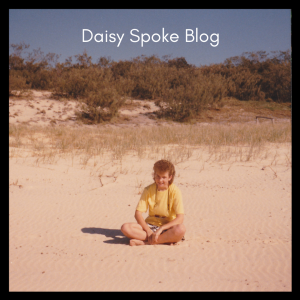
It was no surprise then that at uni I met and married a kindred spirit of the outdoors. We spent our leisure time exploring all the usual National Parks trails within a few hours drive of the city, playing frisbee in the park, cycling the local roads and pathways, paddling on the bay and local creeks, and filling our lives with regular camping trips near and far.
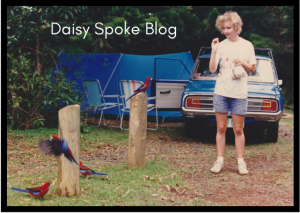
As our children arrived on the scene, they too were included in our adventures which were modified to accommodate their growing needs. Nurturing their love of the outdoors has been one of the most rewarding experiences of my life so far. To see their little faces eagerly joining in on walks, creek paddling and bike rides has been completely heartwarming. And to hear their excited voices asking questions, always asking questions, soaking it all in, enthusiastic about nature and adventure, curious about their world and seeing themselves as a valuable and integral part of it has been a spirited journey.

Through family illness and injury, study stresses and sporting commitments, work pressures and ties to family, friends and farm animals, we’ve kept up our habit of spending much of our leisure time in the great outdoors. Sometimes our adventures have been confined to the backyard (albeit a sizeable acreage of dry bushland) because that’s all we could do at the time. However sometimes our adventures have taken us to amazing far off places – interstate road trips with the trailer packed to the brim with camping gear. We’ve camped and hiked in awe-inspiring places like the The Warrumbungles, Mt Kaputar, the Blue Mountains, Carnarvon Gorge, Atherton Tableland, Central Australia, Birdsville, Innamincka, Gibraltar Range and Sturt National Park. By the time Miss E reached high school, she’d spent more birthdays in our tent than she had at home.
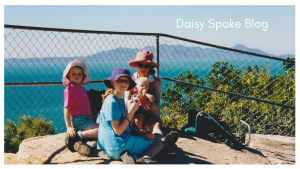
And now this year I sensed I was ready to take on a new challenge. A challenge that would combine my much-loved experiences of camping with the physical challenge of bushwalking – I decided that this year I was going to have a go at backpacking! Something I was never interested in at all until now. I mean, why would you want to carry a heavy weight on your back for hours to a campsite when you can so easily tow a trailer with everything you could possibly need (and more), and pull up right beside a campsite to unpack, in easy walking distance of the bathrooms, and with plenty of walking trails to choose from right where you are! But the inner self doesn’t always operate on logic, and I’ve learned to trust myself when I sense that I’m ready for something new. Back-flipping my thinking didn’t come easily though. I’ve done a lot of soul-searching and asking myself “why?” and I don’t really have that answer yet. But what I do have is a strong pull towards challenging myself, stretching my abilities and coping skills, and discovering new possibilities for myself, not limiting myself. Surprising as it may seem, even to me, the life learning in this backpacking adventure has only just begun!
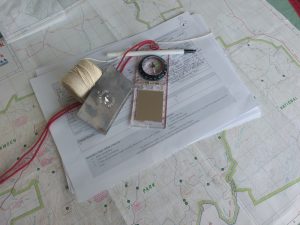
Stay tuned for my next episode of My Great Backpacking Adventure as I take off on my first overnight hiking expedition!
Discovering mountain biking as life’s ultimate parallel universe in her middle age,  Kathryn Walton shares information and reflections in Daisy Spoke that connect, inspire and self-empower women to make healthy choices for themselves. She integrates her love of physical exercise, family, nature, gardening and creative arts with her professional background in mental health social work to facilitate change with individuals, groups and communities of women who are committed to living life to the full.
Kathryn Walton shares information and reflections in Daisy Spoke that connect, inspire and self-empower women to make healthy choices for themselves. She integrates her love of physical exercise, family, nature, gardening and creative arts with her professional background in mental health social work to facilitate change with individuals, groups and communities of women who are committed to living life to the full.
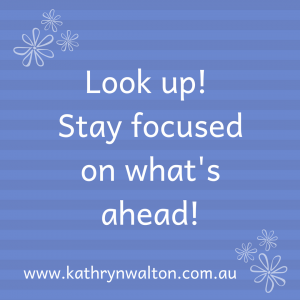
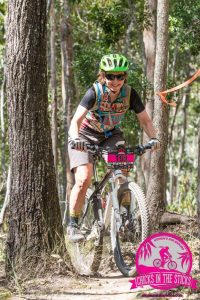
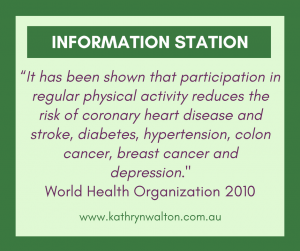
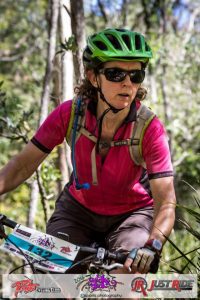


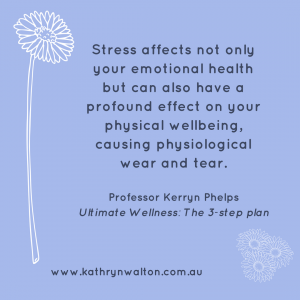

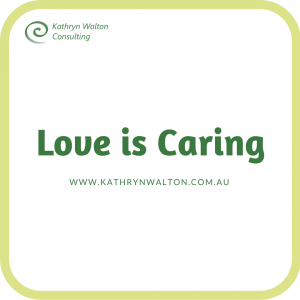
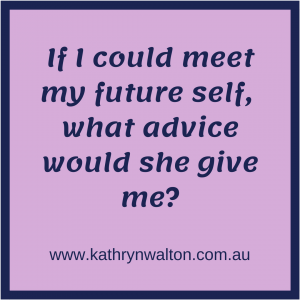
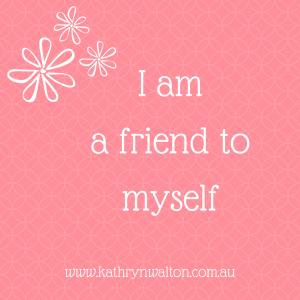 The way we think is closely related to the way we have been socialised when were younger, with the added layer of personality thrown in. So it’s no surprise that women often share certain beliefs, assumptions and thinking patterns related to self-care – it’s selfish to do something for myself; people will think I’m selfish / not coping; time and money should be spent on something or someone else who needs it more than me; I don’t have enough time or energy; I should just soldier on like everyone else does …..
The way we think is closely related to the way we have been socialised when were younger, with the added layer of personality thrown in. So it’s no surprise that women often share certain beliefs, assumptions and thinking patterns related to self-care – it’s selfish to do something for myself; people will think I’m selfish / not coping; time and money should be spent on something or someone else who needs it more than me; I don’t have enough time or energy; I should just soldier on like everyone else does …..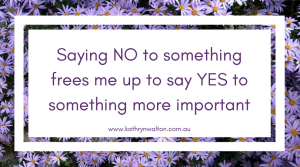

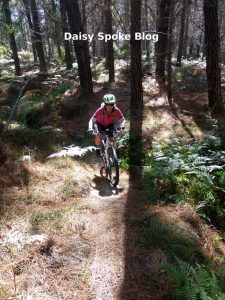 was missing it.
was missing it. 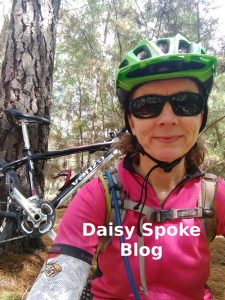 I’ve been practising and teaching this technique for a lot of years, and yet still I sometimes forget to do it when the moment arises. The thing is that on Sunday morning I DID NOTICE those fearful thoughts bouncing round my head. And guess what?
I’ve been practising and teaching this technique for a lot of years, and yet still I sometimes forget to do it when the moment arises. The thing is that on Sunday morning I DID NOTICE those fearful thoughts bouncing round my head. And guess what? 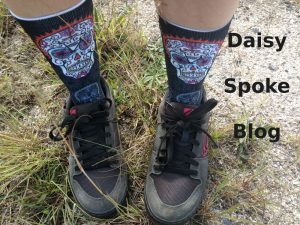 of short hills engaging my quads in an exertion that a couple of years ago would have been painful (if not impossible)! I pedalled in a higher gear than normal and found it easier than expected.
of short hills engaging my quads in an exertion that a couple of years ago would have been painful (if not impossible)! I pedalled in a higher gear than normal and found it easier than expected. 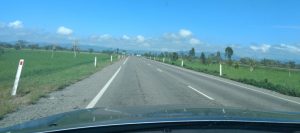
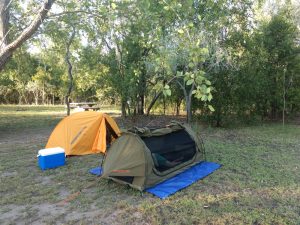 before we even set up camp we had a short walk around the area. A sudden loud rustle in the bushes next to us startled me. Turning around and expecting to see a wallaby, my daughter tells me I wouldn’t want to know what made that noise. On further enquiry she tells me it was a rather large snake, and I began to seriously wonder about moving our campsite further away from said snake.
before we even set up camp we had a short walk around the area. A sudden loud rustle in the bushes next to us startled me. Turning around and expecting to see a wallaby, my daughter tells me I wouldn’t want to know what made that noise. On further enquiry she tells me it was a rather large snake, and I began to seriously wonder about moving our campsite further away from said snake.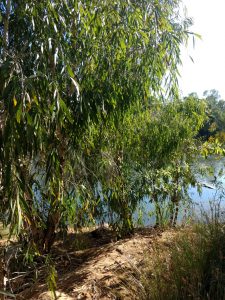 My uneasiness only increased as the evening rolled on and in particular when we came face to face with another snake only a few metres from our tents. Still, I wandered why the uneasiness was there in the first place. Was I sensing a spiritual presence? Was it simply that everything seemed strange and unfamiliar? Or perhaps the absence of other humans? Was I simply tired and misreading my intuition? Was it FEAR welling up and testing my inner strength?
My uneasiness only increased as the evening rolled on and in particular when we came face to face with another snake only a few metres from our tents. Still, I wandered why the uneasiness was there in the first place. Was I sensing a spiritual presence? Was it simply that everything seemed strange and unfamiliar? Or perhaps the absence of other humans? Was I simply tired and misreading my intuition? Was it FEAR welling up and testing my inner strength?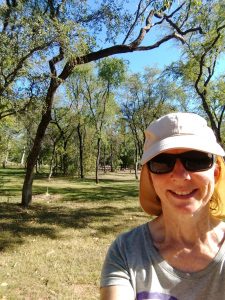 And so I survived. In fact I thrived and had possibly the best sleep so far on my April Adventure. I awoke before dawn, spent a couple of hours silently meditating, embracing my surroundings and feeling entirely captivated by what seemed so haunting and difficult the day before. I feel an immense sense of satisfaction that I didn’t allow my anxiety to rule and limit me. I chose to respect it but also to stand up to it. In doing so I’ve come to know an amazing spiritual aspect of this sacred land which I may not ever understand, but I can accept it and embrace it. And when I do that, I also accept and embrace myself.
And so I survived. In fact I thrived and had possibly the best sleep so far on my April Adventure. I awoke before dawn, spent a couple of hours silently meditating, embracing my surroundings and feeling entirely captivated by what seemed so haunting and difficult the day before. I feel an immense sense of satisfaction that I didn’t allow my anxiety to rule and limit me. I chose to respect it but also to stand up to it. In doing so I’ve come to know an amazing spiritual aspect of this sacred land which I may not ever understand, but I can accept it and embrace it. And when I do that, I also accept and embrace myself.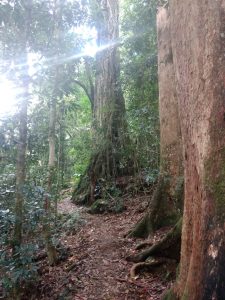 My Year of Adventure in fact began on New Year’s Eve as I set off on a week long road trip with my family to Melbourne and back home again traversing half the eastern side of Australia. With one daughter now settled in Victoria, I refocused my attention on developing new online programs and resources for women. I was thrilled to take my “February Adventure” to Hahndorf in South Australia to participate in and present at the Thriving Women 2018 conference. My “March Adventure” was closer to home with weekends and day trips to several magnificent National Parks, immersing myself in one of my great loves – bushwalking.
My Year of Adventure in fact began on New Year’s Eve as I set off on a week long road trip with my family to Melbourne and back home again traversing half the eastern side of Australia. With one daughter now settled in Victoria, I refocused my attention on developing new online programs and resources for women. I was thrilled to take my “February Adventure” to Hahndorf in South Australia to participate in and present at the Thriving Women 2018 conference. My “March Adventure” was closer to home with weekends and day trips to several magnificent National Parks, immersing myself in one of my great loves – bushwalking.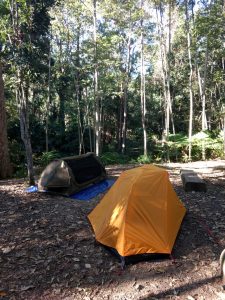 a lot of “what if’s” and identified as a fearful and hesitant adventurer rather than a brave one. My April Adventure has brought up a number of ‘firsts’ for me – I’ve left half my family behind, I’m travelling with only one companion (my younger daughter) through some fairly remote parts of Australia, I’m camping in a tent by myself, I’m having to step up and make decisions I’ve not been responsible for previously, and I’m operating a business far from home and frequently without mobile reception or internet connection.
a lot of “what if’s” and identified as a fearful and hesitant adventurer rather than a brave one. My April Adventure has brought up a number of ‘firsts’ for me – I’ve left half my family behind, I’m travelling with only one companion (my younger daughter) through some fairly remote parts of Australia, I’m camping in a tent by myself, I’m having to step up and make decisions I’ve not been responsible for previously, and I’m operating a business far from home and frequently without mobile reception or internet connection.
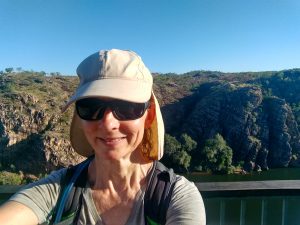
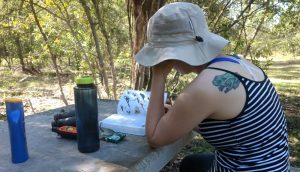
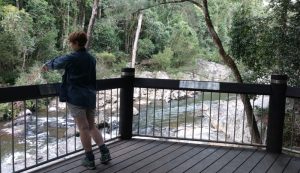

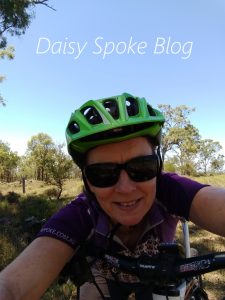 Daily exercise and general physical activity are crucial elements of feeling good. Just as some people might need to diligently take medication every day, I need to exercise every day. Exercise is nature’s way of stimulating the hormones which aid concentration, problem-solving, sleep, digestion, and mood. This daily dose of exercise rebalances our body’s systems resulting in wide-ranging benefits that no single medication can provide. The research is absolutely clear that regular medium to high intensity exercise can have a profound effect on health AND happiness.
Daily exercise and general physical activity are crucial elements of feeling good. Just as some people might need to diligently take medication every day, I need to exercise every day. Exercise is nature’s way of stimulating the hormones which aid concentration, problem-solving, sleep, digestion, and mood. This daily dose of exercise rebalances our body’s systems resulting in wide-ranging benefits that no single medication can provide. The research is absolutely clear that regular medium to high intensity exercise can have a profound effect on health AND happiness.
 Minds are such complex things! They wield a lot of power over our emotions and our actions (including sleep). But unless you notice what’s going on in your mind, and choose how much power to give it, your thoughts, assumptions and beliefs will control you instead of the other way around. The habit of being hooked by thoughts or strongly attached to them is limiting and anxiety-provoking. The key here is to begin by simply noticing what is happening in your mind, and by doing this with curiosity and without judgement. The power is in the noticing. You’ll collect all sorts of interesting bits of information about how your mind works, what thinking patterns it gets locked into, what beliefs and assumptions are behind it all, and how all of this impacts your physiology, your behaviours and your emotions. One of my favourite sayings is “Don’t believe everything you think!” because we can learn to stand back, notice the thought and choose whether to believe it, or not.
Minds are such complex things! They wield a lot of power over our emotions and our actions (including sleep). But unless you notice what’s going on in your mind, and choose how much power to give it, your thoughts, assumptions and beliefs will control you instead of the other way around. The habit of being hooked by thoughts or strongly attached to them is limiting and anxiety-provoking. The key here is to begin by simply noticing what is happening in your mind, and by doing this with curiosity and without judgement. The power is in the noticing. You’ll collect all sorts of interesting bits of information about how your mind works, what thinking patterns it gets locked into, what beliefs and assumptions are behind it all, and how all of this impacts your physiology, your behaviours and your emotions. One of my favourite sayings is “Don’t believe everything you think!” because we can learn to stand back, notice the thought and choose whether to believe it, or not.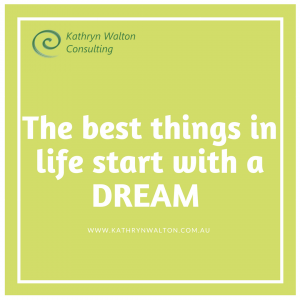
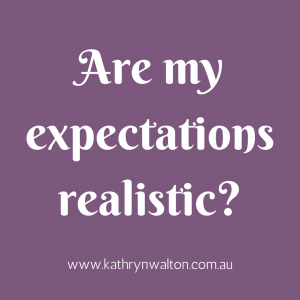
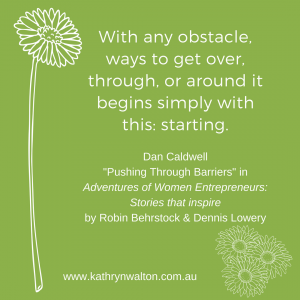
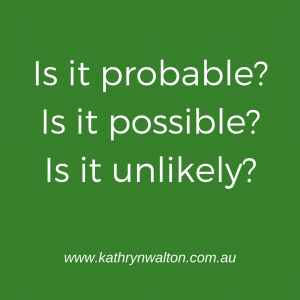

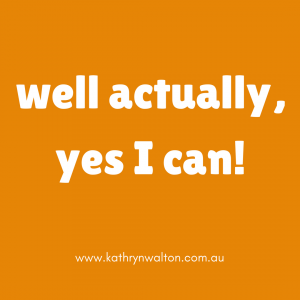
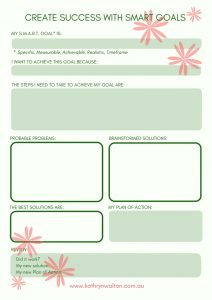
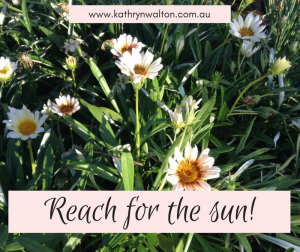 time I respect them. I teach many individuals and groups how to use goals to enhance their mental health and wellness, and I see amazing progress when they are used effectively.
time I respect them. I teach many individuals and groups how to use goals to enhance their mental health and wellness, and I see amazing progress when they are used effectively. 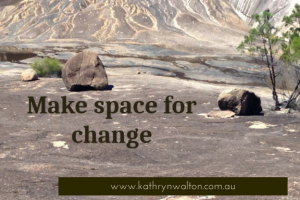
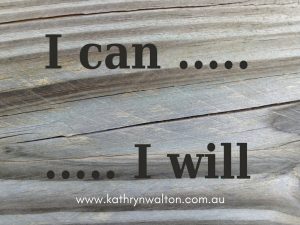 Remember all those problems your mind started to thinking about in Step 2? Problem-solving is where the power is (another blog later this month will look at this in more detail). Persistence makes all the difference between giving up on your goal (and yourself) and being unstoppable. Some of the problems will be predictable and you’ll be able to plan for them. Others less so.
Remember all those problems your mind started to thinking about in Step 2? Problem-solving is where the power is (another blog later this month will look at this in more detail). Persistence makes all the difference between giving up on your goal (and yourself) and being unstoppable. Some of the problems will be predictable and you’ll be able to plan for them. Others less so. In the meantime, if you haven’t already signed up for Grounded Inspiration, now’s a great time to do that. Never miss out on the latest news, inspiration or blog posts! And be the first to hear about my new releases throughout the year as I develop and publish programs to enhance women’s wellness and professional knowledge.
In the meantime, if you haven’t already signed up for Grounded Inspiration, now’s a great time to do that. Never miss out on the latest news, inspiration or blog posts! And be the first to hear about my new releases throughout the year as I develop and publish programs to enhance women’s wellness and professional knowledge.